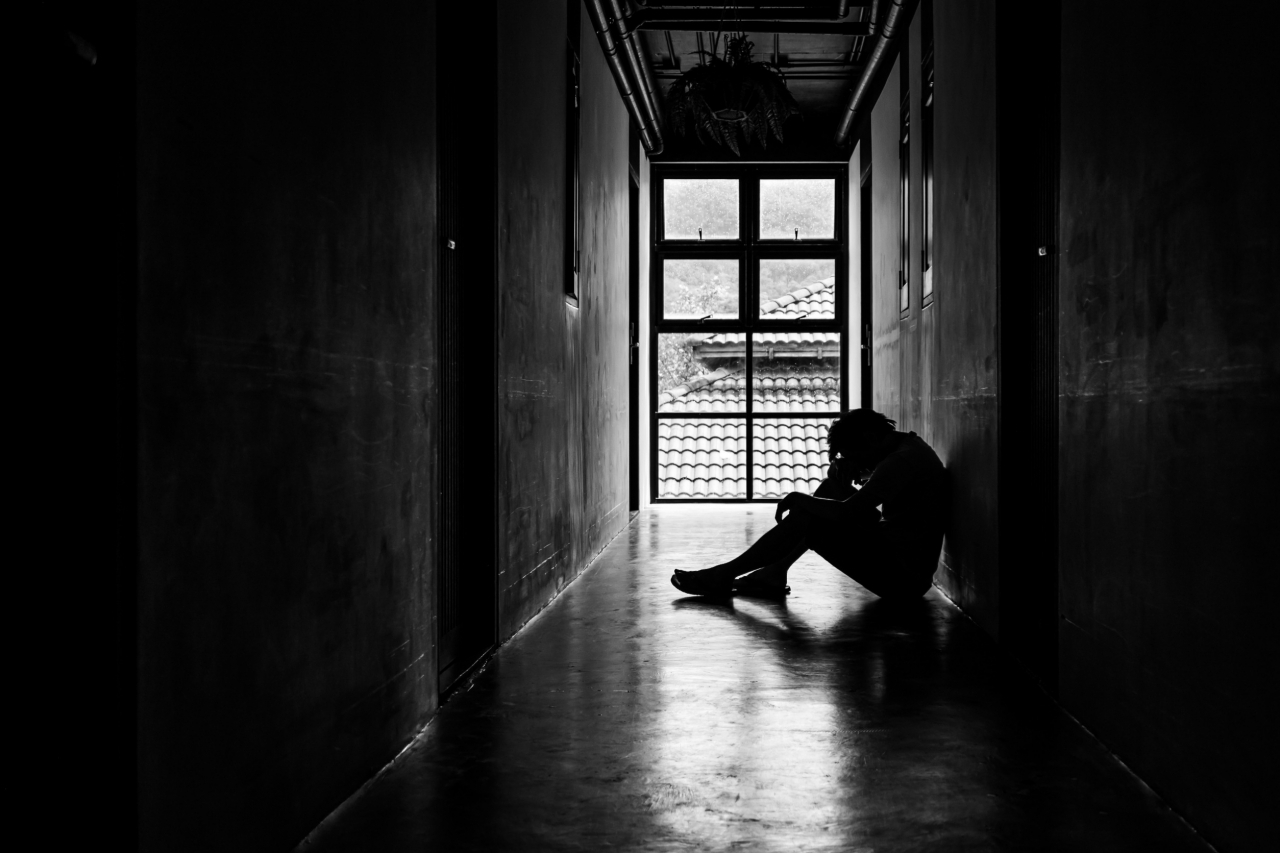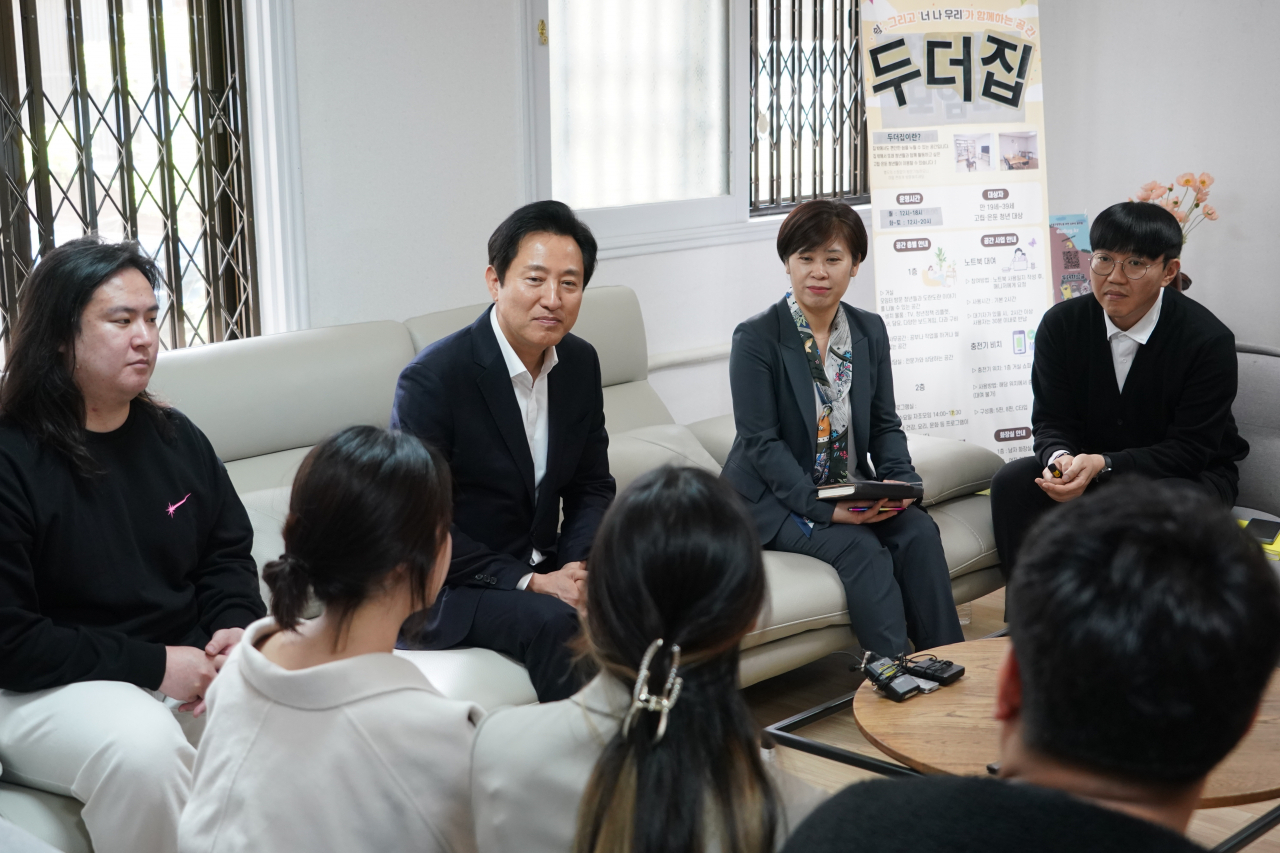 |
This image shows a young man sitting in the walkway of an unidentified building. (123rf) |
You Seung-gyu, after finishing high school, isolated himself, staying holed up at home for about five years in his 20s. Fulfilling military duty did not stop his isolation. He didn't look for a job and disconnected himself from society until 2021. It was a rehabilitation program provided by the Seoul branch of Japanese social enterprise K2 International Group that helped him step out of his home. The 30-year-old has been lending a helping hand to other socially isolated individuals here for the last two years.
"Back during my days in rehab, Korea suffered from an even greater scarcity of data on socially isolated people than now, so they had no choice but to go through the one-size-fits-all programs imported from Japan," You told The Korea Herald, referring to the rehabilitation program of K2 International, which withdrew from Korea in 2021.
The Japanese program was designed to tackle the social phenomenon of acute social isolation called "hikikomori," meaning "shut oneself in" in Japan. South Korea now faces the same social challenge that Japan has been suffering from, particularly among the young generation.
The Seoul city government estimates that as much as 129,000 people aged between 19 to 39 remain extremely secluded either due to social withdrawal or isolation, as of January. They cited challenges in getting employed, mental health issues and difficulties in creating social relationships.
These individuals account for 4.5 percent of the total number of young Seoulites, according to the municipal government's survey of over 5,500 people aged between 19 and 39. The figure stands higher than that of Japan, which was less than 2 percent among those aged between 15 and 39 about a decade before.
Nearly 30 percent of socially isolated individuals have secluded themselves in their house for more than five years, data also showed.
Young Koreans’ acute social isolation is attributed to factors such as continuous exposure to a notoriously competitive culture, bullying and domestic violence, among other things, according to the city government.
The COVID-19 pandemic has also played a role in discouraging isolated people from returning to society. A 2021 study by the Korea Institute for Health and Social Affairs showed that Korean hikikomori would hypothetically trigger a loss of 500 billion won ($374.4 million) each year, if they cannot be rehabilitated to enter the workforce and need to rely on social services for the rest of their lives.
Baby steps are being taken by the socially isolated who overcame their situations like You. He has been helping about 10 of those who suffer from the condition each year by running his own rehabilitation program in a co-living space in northern Seoul, called Not Scary Company, co-founded with three other K2 International alumni.
The Seoul city government also announced plans Monday to locate more people suffering from social isolation and help them regain self-confidence, encouraging them eventually to become mentors for others in the same boat.
It also plans to establish 20 centers across the city that can help 5,000 individuals in 2025. Seoul also pledged to come up with measures tailored to the different stages and causes of social withdrawal.
 |
Seoul Mayor Oh Se-hoon (second from left) is seen holding a conversation with socially isolated people at a privately-run rehabilitation center in northern Seoul on Monday. (Seoul Metropolitan Government) |
"We are just at the very early stage to set up the systems, create organizations and programs to help (the socially withdrawn) start anew," Seoul Mayor Oh Se-hoon said as he visited a private rehabilitation facility in Eunpyeong-gu, northern Seoul. "Seoul will spare no investment to bring about the changes."
On the regional and central levels, the government is offering policy measures, but does not have a consistent definition of what social isolation is.
The city government of Seoul, home to 9.77 million people, defines people who remain isolated physically or psychologically for at least six months and have been inactive in their jobseeking activities for at least a month as socially isolated.
But the central government defines people as socially isolated when they rarely leave their homes to go out to enjoy hobbies or buy necessities at nearby convenience stores, without measuring how long they are isolated. A preliminary finding by the Office for Government Policy Coordination showed that Korea has 244,000 such individuals nationwide as of 2022.
You of Not Scary Company, meanwhile, pointed out that there is a long way to go for Korea to set up decent infrastructure to help people overcome social isolation, given the enormous cost and time needed to help a socially isolated person stand on their own feet.
"Even the most experienced consultants would need to go visit a socially isolated person for months or even a year or more (to get them to open up)," said You, one of the advisers of the city's policy toward social isolation.
"Professionals at the rehabilitation centers suffer from a very intense work environment, so they often end up experiencing burnout and quitting. Without a deep understanding about how things work, all that massive monetary and human support can be of no use," he added.







